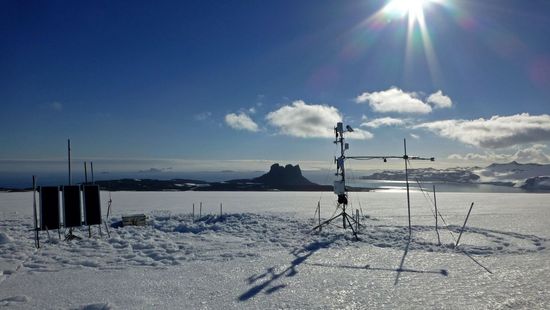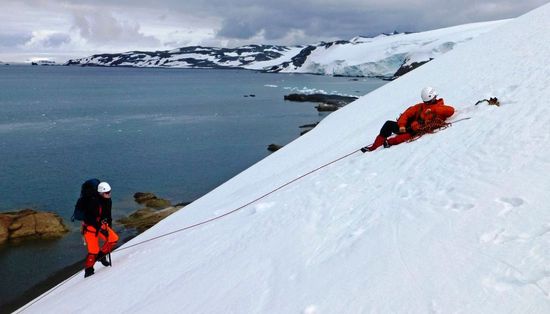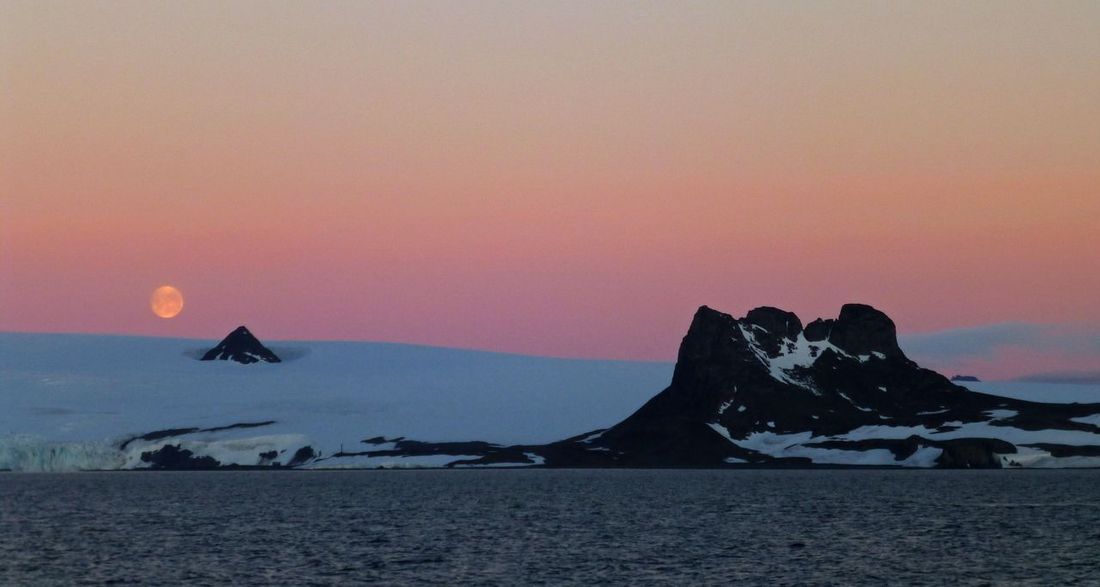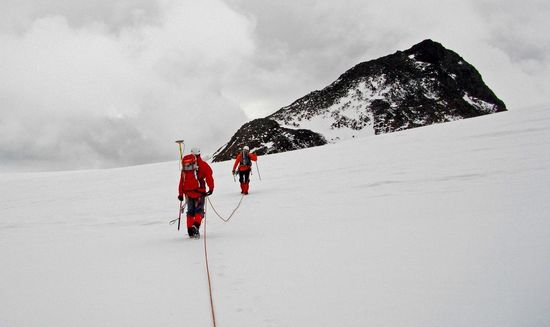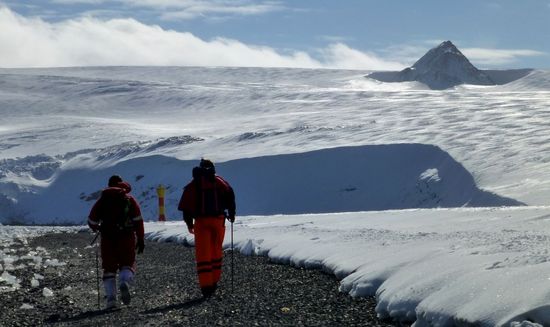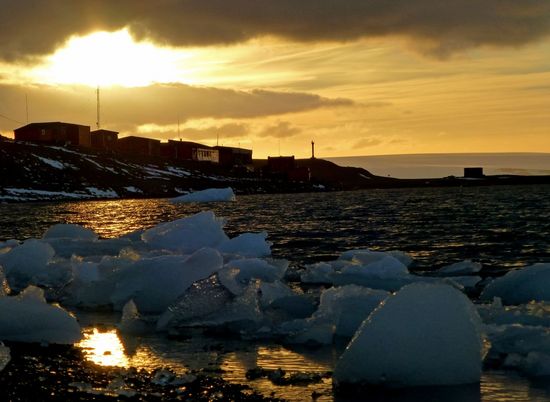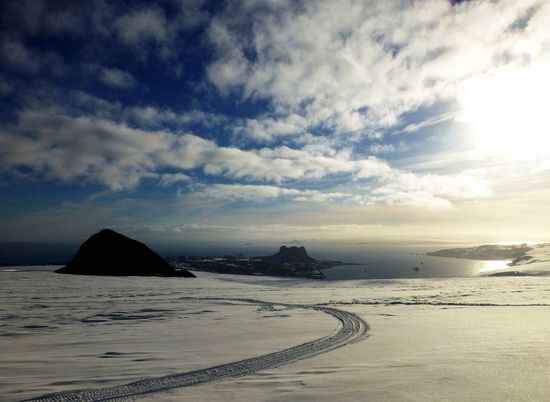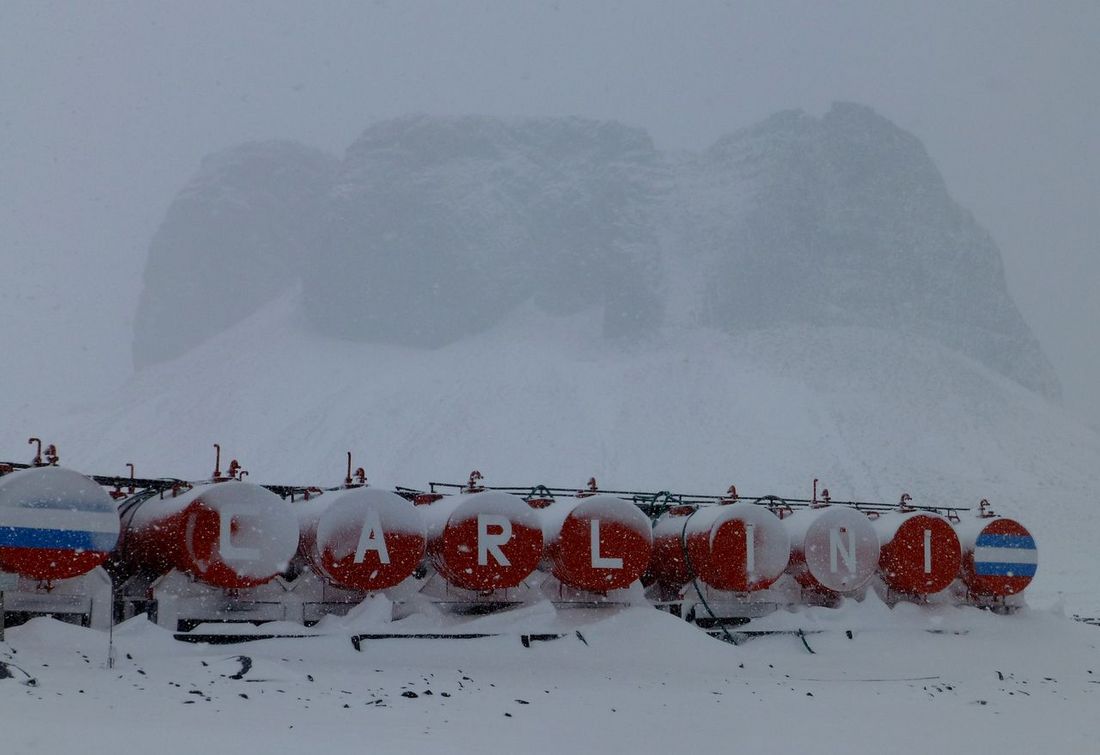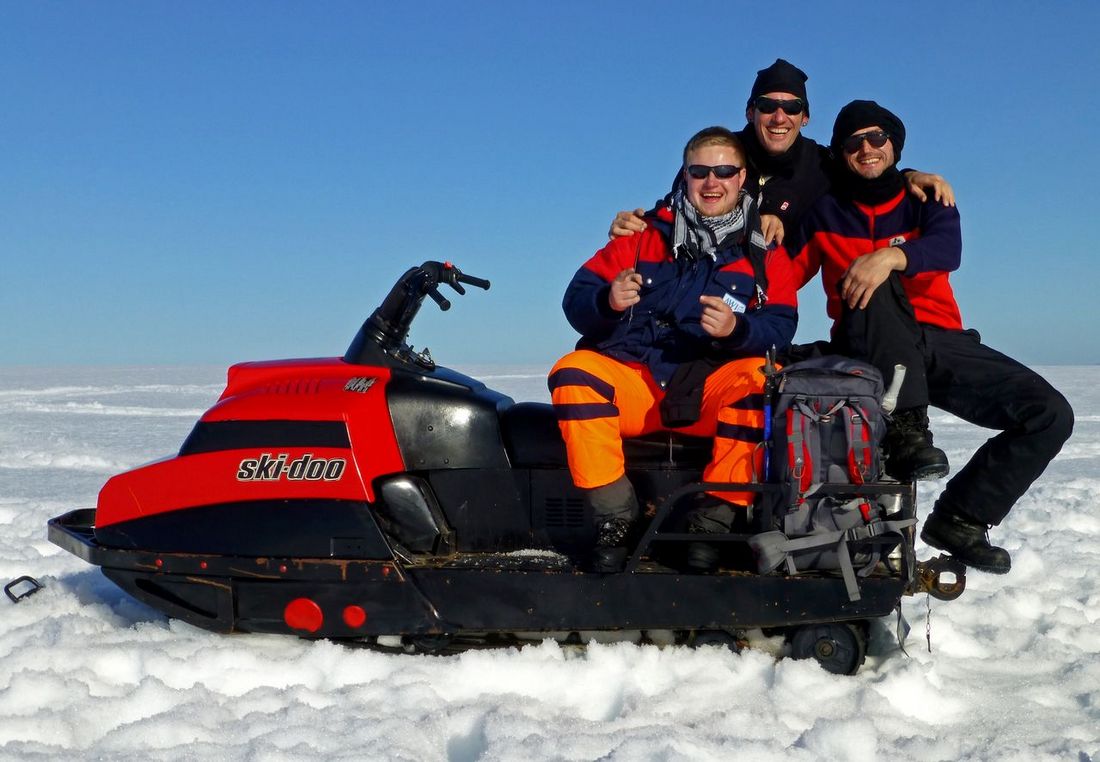
The Glaciology Group of the Antarctic Summer Campaign 2013/2014 © Damián López
Antarctic Summer Campaign 2014 - Carlini´s Glaciology Group
During 2014´s Antarctic Summer Campaign, Carlini´s Glaciology Group arrived at Carlini Station (former Jubany Station) on King George Island (Isla 25 de Mayo), set in the South Shetland Islands, about 150 kilometers northwest from the Antarctic Peninsula. The main goal of this field trip is to carry out the seasonal maintenance of an Automatic Weather Station (AWS), which is set on the Fourcade Glacier, nearby Carlini Station. Another central objective is to conduct different kind of measurements related with the mass balance of the glacier. The members of the team this year are Hernán Sala (IAA, Buenos Aires, Ecologist), Damián López (ZFL Bonn, PhD in Chemistry) and Tobias Betsch (Univ. Erlangen-Nürnberg, Master Student of Physical Geography).
On January 14th, Damián López and Tobias Betsch flew from winterly Germany via Madrid into the summer heat of Buenos Aires, where they met the last member of the team, Hernán Sala. Two days later we jumped on a Hércules C-130 cargo plane from the Argentinean Air Force and arrived in Río Gallegos, a city located in the southern tip of Patagonia. We only had to wait one more day to get a “window” of good weather conditions to proceed with our flight to Frei, the Chilean station that runs the airstrip on King George Island. The “Aviso Castillo”, a logistic ship from the Argentinean Navy, picked us up and took us to Carlini Station, where we arrived after midnight in a magnificent set up with the full moon raising on top of the glacier. It was a four day trip that took us from Germany to Antarctica, roughly 14.000 kilometers away from each other.
After a couple of days setting up our gear for work, we were able to go to the Fourcade Glacier for the first time in this campaign. Our efforts were focused primarily on the maintenance labors at the AWS, in order to have it set up and ready for the upcoming winter season. At the same time, we continued with the periodical measurements of the snow stakes used to evaluate the ablation/accumulation regime of the glacier, as well as the pluviometers installed to estimate the precipitation in the area. Since we were quite lucky to have good weather conditions in the first weeks of our stay, we were also able to conduct most of the key mappings we had planned with the Differential GPS (DGPS). Using the Skidoos available from the AWI, we crisscrossed the surface of the Fourcade Glacier and the Warszawa Ice Field recording a grid that later will be used to compare and model the ablation/accumulation of these glaciers along the past years. Since the DGPS allows us to measure the position and the elevation of points with high accuracy, it is a very useful tool to record outcrops and shorelines which can later be used as a geographical reference for satellite images. With this aim in mind, we conducted these kinds of mappings on foot, being able to get tracks from distinctive rock outcrops on the glacier, on the Barton Peninsula area and around the mighty nunatak “Yamana”, which dominates the landscape of Potter Cove with its distinctive cone shape, along with the “Cerro Tres Hermanos” (Three Brothers Hill).
The day to day living at the station is quite easy going. At the moment we are about 80 people, from whom around 55 are scientists and the rest is part of the military crew from the Argentinean Army, in charge of the maintenance and logistic support at the Station. Here there is no need of money (it´s an “all inclusive” system), keys or mobiles (no connection at all, only an erratic internet access). Luckily our cooks from this year, Víctor and José, are very good and we enjoy three nice meals a day. Of course, meat can´t be absent in an Argentinean menu and it is included most of the times at lunch and dinner. It is not an easy life for a vegetarian here! When it comes to leisure activities, there are a few things you can do after work: going to the gym to do some workout, playing table tennis or enjoying the only official cinema in Antarctica, which has its feature presentations on Friday nights, pop corn included. Saturday nights are a classic which include pizza and beer, and afterwards, the cinema becomes “Atake”, the disco where you can dance until early into Sunday mornings.
We are already halfway through our stay, since we are scheduled to fly back to the continent on March 12th. Until then, and depending on the weather conditions, we still have some pending tasks. These include mapping the shoreline of Potter and Barton Peninsula with the DGPS, track the Fourcade Glacier´s border in order to record its ongoing retreat and doing the training of 2014´s overwintering scientist, Facundo, who will be in charge of the maintenance of the AWS and the periodical measurements of the snow stakes until we are back next summer for 2015´s Antarctic Summer Campaign.
Greetings from Antarctica!
Tobias Betsch & Damián López

